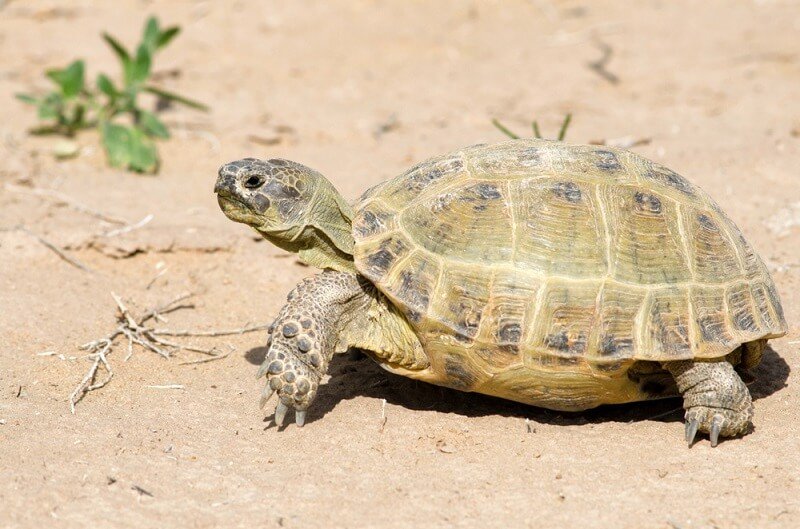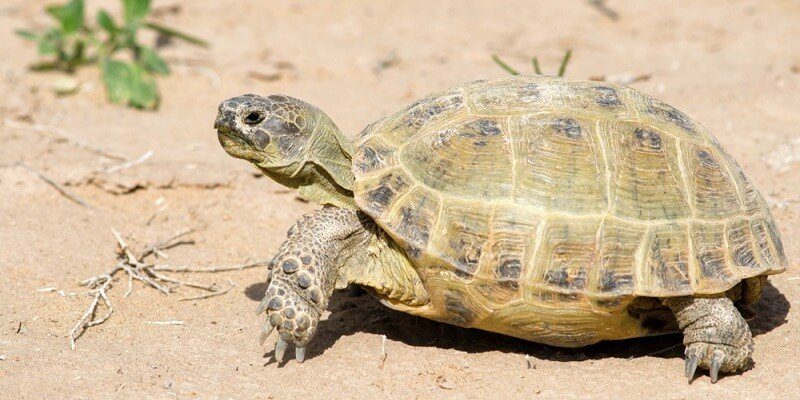
So, why does this even matter? Well, understanding how to identify a Russian tortoise not only feeds your curiosity but also helps in conservation efforts. These tortoises are native to regions of Central Asia and have specific environmental needs. Knowing how to spot one can lead to better care in captivity, or simply allow you to appreciate these animals in their natural habitat without causing them stress. Let’s dive into the world of Russian tortoises and learn how to recognize them when they’re out and about.
Characteristics of Russian Tortoises
The first step in identifying a Russian tortoise is to get familiar with their physical features. These tortoises are relatively small, typically measuring around 6 to 10 inches in shell length. Their most notable trait is their high-domed shell, which is usually yellowish-brown with dark markings. Imagine a miniature dome-shaped castle!
Their limbs are robust and covered in scaly skin, with the front legs being slightly flattened for digging. These physical attributes help them survive in their native habitats, which often consist of rocky areas and grasslands. The coloration of their shells can vary, but usually, you’ll notice a pattern of irregular dark patches on a lighter background. This pattern can be a fun visual puzzle when spotting one in the wild!
In addition to their shell, pay attention to their legs and head. Russian tortoises have a distinctively shaped head with a pointed snout and large eyes that can be quite expressive. Their skin is often a shade of brown or gray, blending in nicely with their surroundings. This camouflage is an essential survival tactic, helping them avoid predators.
Habitat and Behavior
Understanding where Russian tortoises live can significantly aid in identifying them. They thrive in arid, scrubby regions, preferring dry habitats with plenty of sunlight. Often, you’ll find them in places like grasslands, rocky hillsides, or even around gardens if they’ve managed to wander there. Picture a sunny, rocky hillside where these little tortoises can soak up the sun—this is their ideal spot!
Behaviorally, Russian tortoises are known for their burrowing habits. They dig themselves into the ground to escape the heat and dryness of their environment. So, if you’re out in the wild and come across a hole or shallow burrow, there’s a chance a Russian tortoise could be nearby. Just remember to tread lightly and not disturb them.
You might be wondering how active these tortoises are. They tend to be crepuscular, which means they’re most active during the early morning and late afternoon. During the hottest parts of the day, they’re likely tucked away in their burrows, resting. Knowing this can help you plan your tortoise-spotting adventures!
Distinguishing Features from Other Tortoise Species
There are many tortoise species out there, and sometimes it can get a bit confusing. So, how do you know you’re looking at a Russian tortoise rather than, say, a Greek or a Hermann’s tortoise?
One key distinguishing feature is the shape of the shell. Russian tortoises have a more rounded and dome-like shell compared to the flatter shells of some other species. Additionally, the patterning on their shells is usually less pronounced than on Greek tortoises, which often have more vibrant markings.
Another notable difference is size. Russian tortoises tend to be smaller than many other tortoise species. If you’re looking at a tortoise and it’s smaller than 10 inches, there’s a good chance it could be a Russian tortoise. Plus, their more elongated head and distinctive snout shape can also help you differentiate them from others.
Lastly, focus on their behavior. Russian tortoises are generally more active and curious than some of their counterparts, which might be more shy. If you see a tortoise moving confidently about, it could very well be a Russian tortoise enjoying its surroundings!
Seasonal Changes and Identification
One fascinating aspect about the Russian tortoise is how its appearance can change with the seasons. In warmer months, they often become more vibrant in color. You might notice their shells glistening under the sun, showcasing those beautiful patterns more clearly.
However, in winter, these tortoises go into a state of brumation—a sort of hibernation for reptiles. During this time, they become quite inactive and may stay hidden in their burrows. If you’re out searching in colder months, it’s unlikely you’ll find them roaming about.
Understanding these seasonal changes can also guide your identification efforts. If you’re out in the wild during springtime, you’ll likely see them actively foraging for food like grass and leafy greens. In this context, the vibrant activity can be a thrill to witness!
Conservation Status and Why It Matters
It’s not just about spotting Russian tortoises; it’s also crucial to understand their conservation status. These charming reptiles are facing threats from habitat loss and illegal collection for the pet trade. By learning how to identify them in the wild, you play a part in raising awareness about their plight.
When you can recognize these tortoises, you can help keep an eye out for them and report any illegal activities you might witness. Plus, educating others on their unique features can help build appreciation for this species and inspire people to protect their habitats.
You might even feel compelled to participate in local conservation efforts or support organizations working to safeguard tortoises and their ecosystems. Every little action counts when it comes to making a difference.
Final Thoughts
Identifying a Russian tortoise in the wild is more than just a fun activity; it’s an opportunity to connect with nature and advocate for a species that needs our help. By understanding their physical characteristics, habitat, and behaviors, you’re not only honing your observation skills but also developing a deeper appreciation for these remarkable creatures.
Next time you venture outdoors, keep an eye out for that distinctive dome-shaped shell and those curious little faces peeking out. Every encounter with a Russian tortoise is a chance to celebrate the wonders of wildlife. So grab your binoculars, step into the wild, and enjoy the adventure of spotting one of nature’s true gems!

